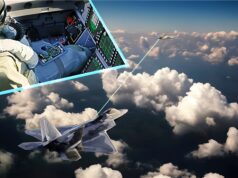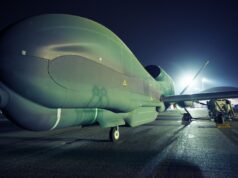The Ministry of Defence (MOD) has addressed questions in Parliament regarding the potential impact of the collapse of Reaction Engines Ltd on the UK’s hypersonic air vehicle programme.
Neil O’Brien, Conservative MP for Harborough, Oadby, and Wigston, raised the issue, seeking clarity on the programme’s future.
O’Brien asked the Secretary of State for Defence, “What assessment has been made of the impact of the collapse of Reaction Engines Ltd on the UK Hypersonic Air Vehicle programme?”
Responding on behalf of the department, Maria Eagle, Minister of State for Defence, confirmed that discussions are ongoing with the Administrators handling Reaction Engines Ltd. However, she highlighted the sensitivity of the situation.
“The Ministry of Defence is in discussion with the Administrators appointed by Reaction Engines Ltd,” Eagle stated. “However, these discussions are commercial-in-confidence, and I cannot disclose further details.”
Reaction Engines Ltd had been a prominent contributor to advanced propulsion technologies, including hypersonic systems, raising concerns about the programme’s continuity following the company’s collapse. While Eagle did not elaborate on the MOD’s contingency plans, her response indicates that the matter remains under active consideration.
The MOD’s statement reflects its cautious approach to safeguarding commercially sensitive discussions while addressing broader questions about the future of the UK’s hypersonic capabilities. Further updates may depend on the outcome of ongoing negotiations with the Administrators.
At the UK Defence Journal, we aim to deliver accurate and timely news on defence matters. We rely on the support of readers like you to maintain our independence and high-quality journalism. Please consider making a one-off donation to help us continue our work. Click here to donate. Thank you for your support!













We have to be careful here Reaction Engines had a particular hypersonic design based on the Sabre hybrid jet/rocket engine for a propulsion system that was best suited to ground to outer atmosphere environment. That is a very particular and specialist requirement and though very innovative was searching for a workable business plan which is why it has struggled to survive, as disappointing as that it. As things stand development costs and potential market didn’t financially correlate.
Equally it produced very innovative pre cooler technology which is the real gem as it has great potential in all manner of industries from factory processes, turbojet engines through to large battery storage and F-1. However exploiting these has barely got going. I think some preservation of this technology will continue it works but ensuring the tiny channels involved don’t clog up or become damaged and thus the technology is reliable is now the concentration of development work.
Now I don’t know but I would speculate the complete hybrid turbojet/rocket Sabre would not be the best hypersonic propulsion system for most missiles as its complex and expensive when air launched missiles would be best served by booster ram/scram jet designs which are smaller, simpler and cheaper.. only surface launched very complex long range manoeuvring missiles seem likely to benefit as they could have great flexibility no doubt. But Britain isn’t considering such a gold plated missile.
On the other hand rapid turbojet missiles could certainly benefit from the pre cooler technology exploiting the engines new found ability to reach Mach 3+ and where long term reliability is not a priority considering its role. So as I have always said I suspect the pre cooler technology wil likely be saved in some form and continue its development. Meanwhile I suspect whatever missiles are being considered under these various research programmes there was little likelihood that a Reaction Engines full hybrid solution was the preferred choice so the effects are not as widespread as it might seem immediately after the initial announcement.
I’ve seen articles saying it reached a milestone of Mach 5 in the lab.
It’s the core of the UK’s hypersonic propulsion project.
NOT Sabre but precooled turbofans, one of only two projects in the world that allows flight from Mach 0 to over Mach 5 with a single engine. Quarterhorse is the other project in the US.
That’s the speed limiter for turbines, intake temperature. Turbines can’t use supersonic airflow so you have a shock cone that decelerates the air. However, this raises the temperature to, at Mach 5, thousands of degrees.
So you run that through the precooler, which is functioning tech, and now your turbine works at above Mach 3. I think the project was called HVX?
This cannot be allowed to disappear for national security reasons.
My sense is you are correct. This technology is beyond my competences to judge but this kind of research (minus actual products) is what the U.K. must continue to do if it wishes to keep up.
We have been offered to buy the company as is, but was told to come back next year
Durrrr
It’s also part of the hydrogen engine project at Cranfield.
I would like this technology was selled to Mexican Inversors please, if you sell you otain more money, and help another country to develop his own technology
There are always stories coming out about new advances in quantum instrumentation and their eventual ability to make the oceans visible, pitting our nuclear deterrent at risk. It won’t happen in the next 5 years but maybe in the next 15 to 20. We keep underestimating Chinese advancements in this area. They are good at this.
If submarines don’t lose their absolute advantage but degrade by a certain margin their edge then moving to a mixed delivery system may be necessary, a 21st Century V bomber fleet that this kind of engine coild be well suited to support.
We cannot afford to lose the skills and IP that comes with this.
I read recently that France is pushing their rail gun technology along a pace. China is doing well and so is Japan. But where is the British system? I know we researched it heavily. I saw the results of basic tests at the uni I went to in the late 90s so we were working on it. I hope we still are but I cannot help think we didn’t and that learning has largely been lost.
Not only is it a great waste of funding but it reduces our options in negotiations with allies.
I went to BAE Systems advanced research centre, the chap working on this was pointed out, there were definitely test firings, if I recall on a navel ship, the centre closed, I suspect with it many research programmes.
I’m so disappointed RE has gone into receivership, it was the UK’s best chance at addressing sustainable long haul aviation, the ATI looked into this, they came to the conclusion that liquid H2 was the only viable solution which is fraught with risks. In any event kerosene fuel is a finite resource and its going to get pricey. Only the military will be able to afford synthetic fuel and we don’t have enough land to grow bio fuel to meet our own current needs, this is a bigger problem than it might first appear.
As long as ownership remains within the UK I am happy.
How on god’s green earth has this not just been nationalised. It’s world-leading, future technology, built for a pittance. Another enraging demonstration that successive governments’ have the collective vision of a myopic mole.
The downfall of Reaction Engines was NOT due to a lack of HMG support. In 2013 the Chancellor announced a £60 million grant to develop the SABRE engine in the UK, however, in 2015 the scientists and engineers on the board of directors were replaced by venture capitalists whose sole interest was to sell the technology to the USA and make billions. High temperature tests were then carried out in the USA which gave America all the technology they needed to replicate the programme. The HMG grant of UK taxpayer’s money, and the subsequent £90 million of follow-on investment, were squandered by incompetent and greedy management.
So, since the UK had effectively already paid for the IP through grants, nationalise it on national security grounds & aggressively pursue any patent infringement by the US
That woudl, of course, require the UK Government to have some intestinal fortitude.
Do it before Trump takes office
Skylon was not the first such concept Alan Bond came up with- that was HOTOL back in the ’80’s. The government was involved in financing that, but ultimately not only canned it but also classified the engine design so that no-one else could ever use it.
Pursuing patent infringement in the courts requires that you first publicly detail the thing(s) you want to protect in a patent. Many companies prefer to simply keep the technology under wraps as a more reliable way of preventing it being copied. Reaction Engines certainly does.
You must be joking. It’s a pittance, Alan Bond did very well to get it to where it needed to be before he retired, despite the lack of Government support. I would put the entire UK civilian aerospace R&D budget on this horse. ATI fritter away about this amount every year. This engine could have delivered the net zero target for longhaul, the ATI are suggesting liquid H2 for civilian aircraft, good luck with that. As you’ll appreciate if the temperature rises it needs to be vented, end off and you can’t used power off flight half way across the Atlantic. There isn’t even a fuel that can be identified for when kerosene runs out! All the current business models fail on synthetic fuel and we can’t grow biofuel with the land we have to meet our own current aviation needs. At least civilian longhaul dies with the existing fleet.
to be fair approx 150m is pocket change for HMG, it will fund the NHS for just 6 hours. New tech takes money as an example the test facility for Roll Royce’s GTF gearbox was 60m, just the test facility and only the gearbox element!!!! And that’s for a relatively well known technology compared to what Reaction was attempting to do.